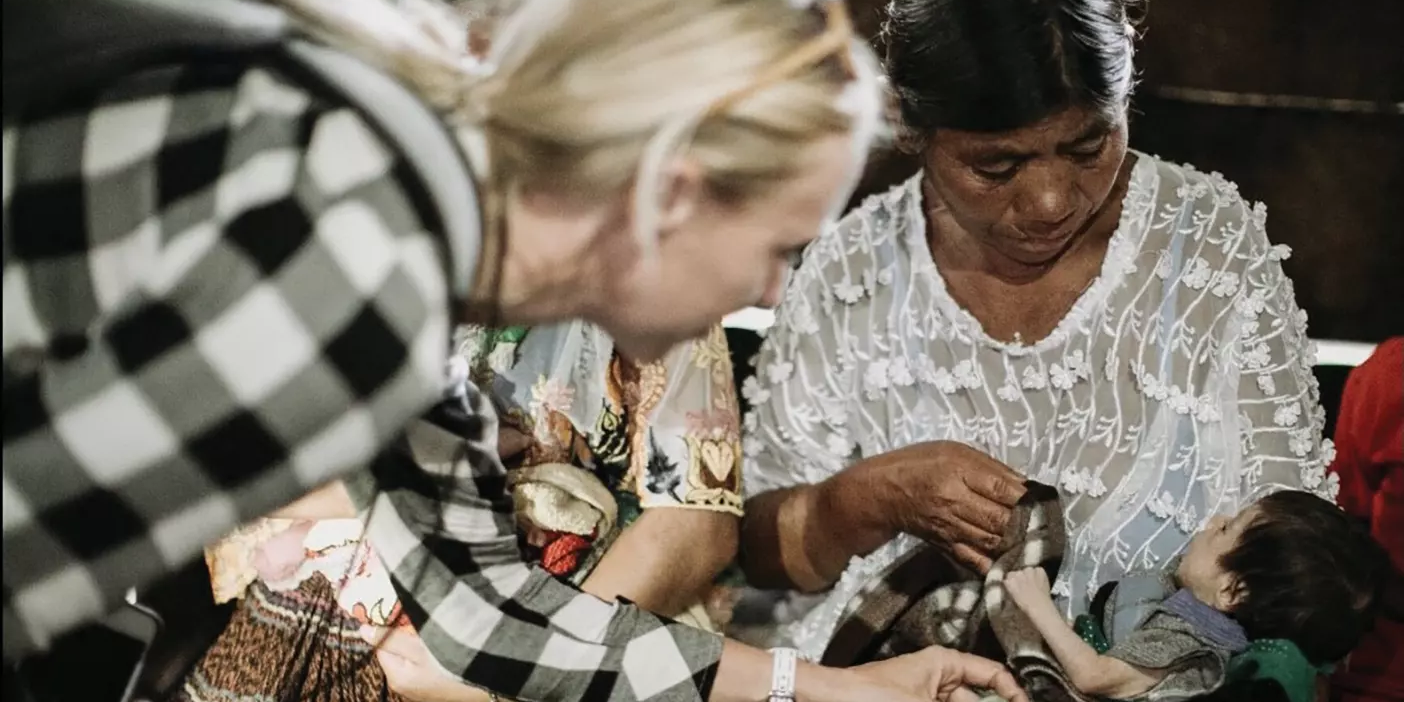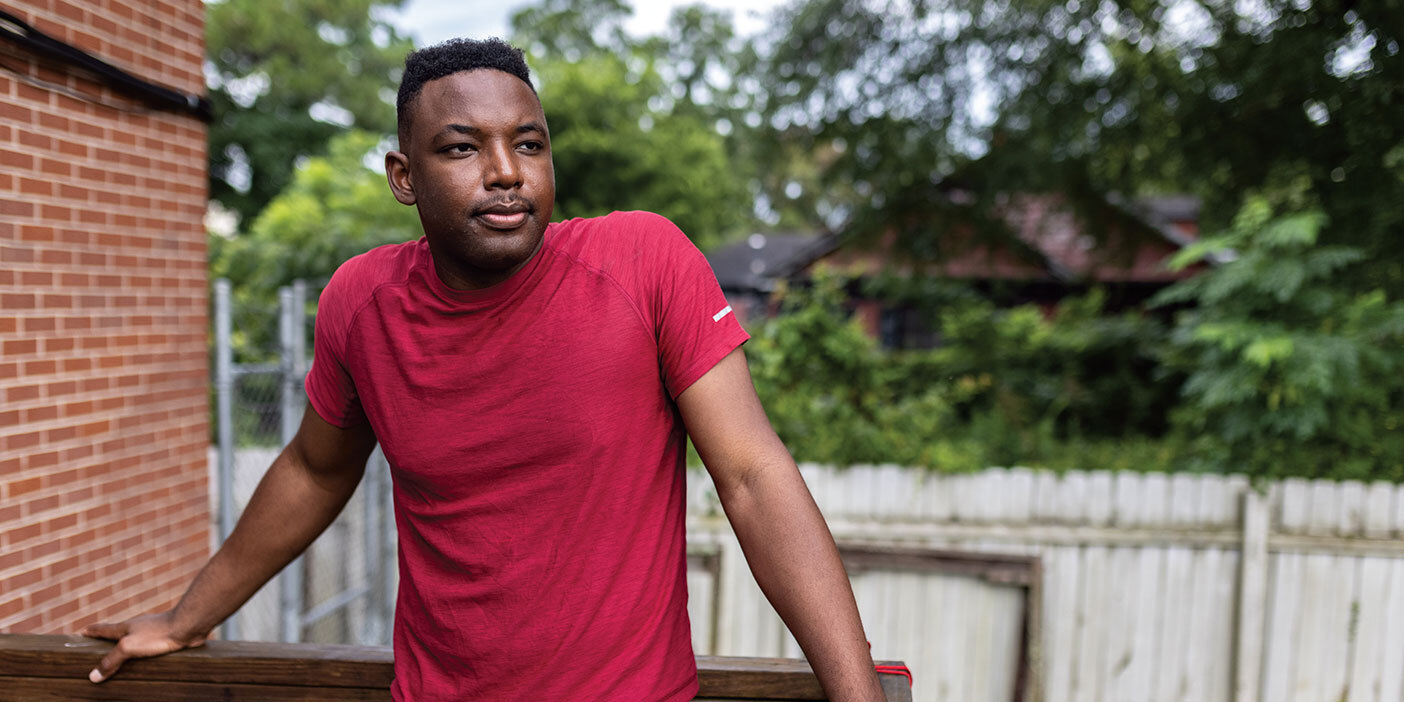Whatever It Takes
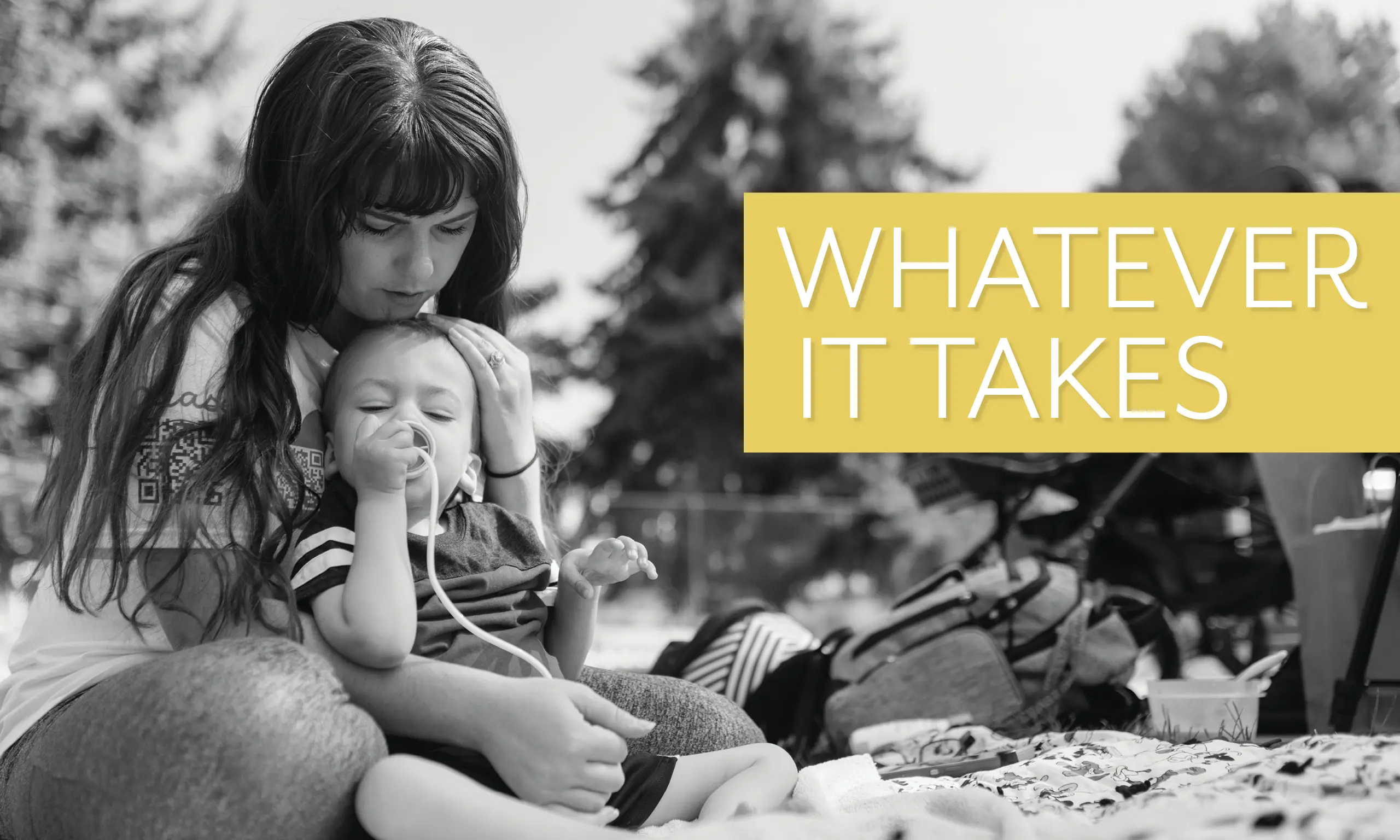
When her toddler son received a devastating diagnosis, a mother threw herself into the fight to find a cure.
By Michael R. Walker (BA ’90) in the Fall 2022 Issue
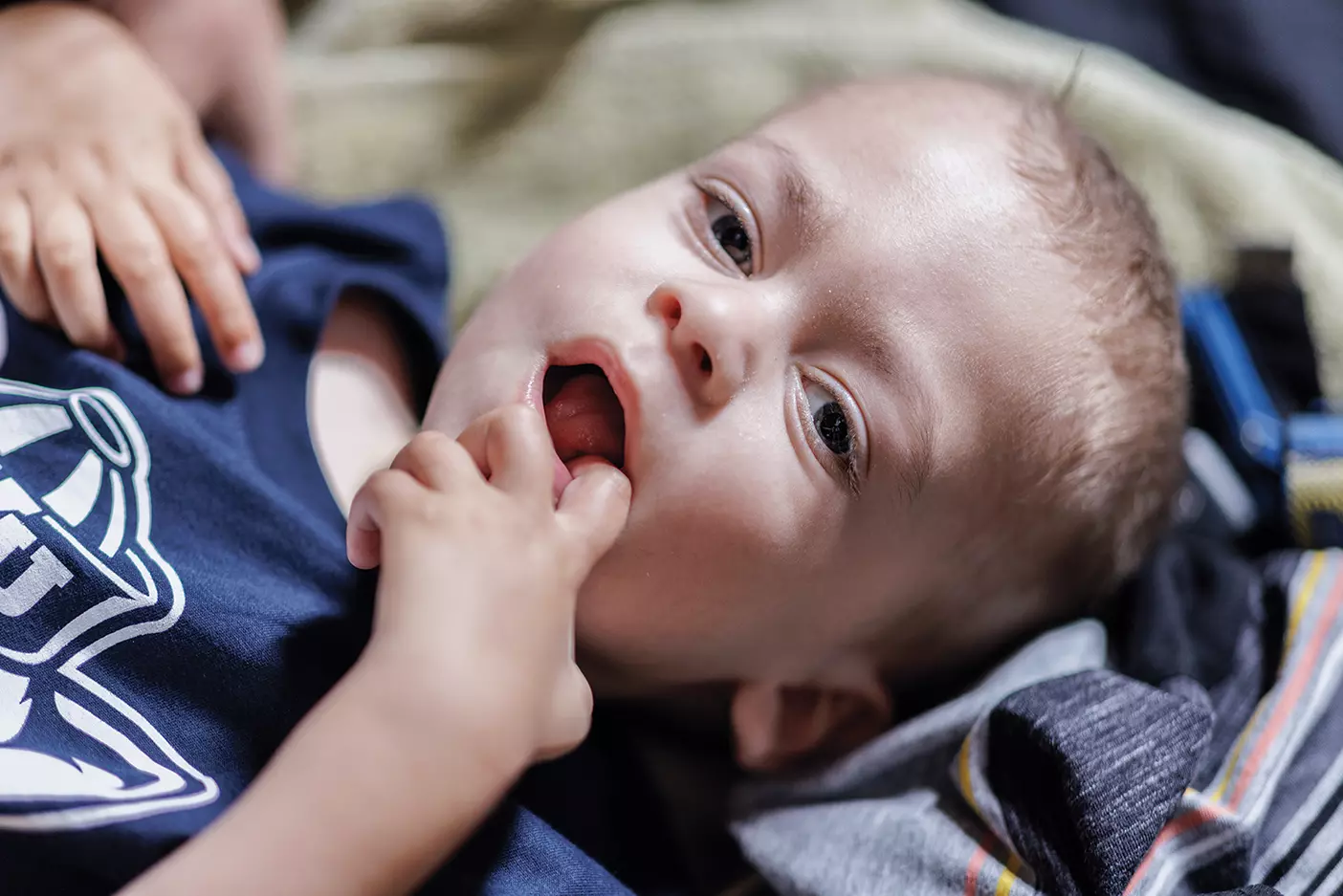
The doctor’s words were devastating. “No, you don’t understand. He’s not going to get better. He is only going to get weaker from this point. This does not end happy; this ends in a funeral,” the geneticist told Brittany Kyle Markham (BFA ’14) over a Zoom call in March 2021. Her toddler son, Damian, was going to die of an exceedingly rare disease, and they needed to prepare for that. “So take pictures, take videos, do whatever you can to make the life that he has a happy one and a comfortable one, but this is not going to end the way you want it to end.”
Brittany was stunned. “Only a couple of months before, we didn’t think anything at all was wrong, and now, all of a sudden, he’s dying. . . . Just total shock.”
Her husband, Brock S. Markham (BS ’16), was on a plane when the news came. “How do you comfort your wife when you come home to the news that your infant son is dying?” he later wrote. “It didn’t seem real. At any time, the doctor would call and say, ‘There was a mistake. Damian . . . actually has this different sickness and here is the medicine or cure for it.’”
As the young couple tried to process this new information, Brittany found herself at a crossroads. Should she follow the doctor’s advice and focus on making memories, or should she fight this disease and try to extend her son’s life? After weeks of research and prayer, she made up her mind: “I decided to fight.”
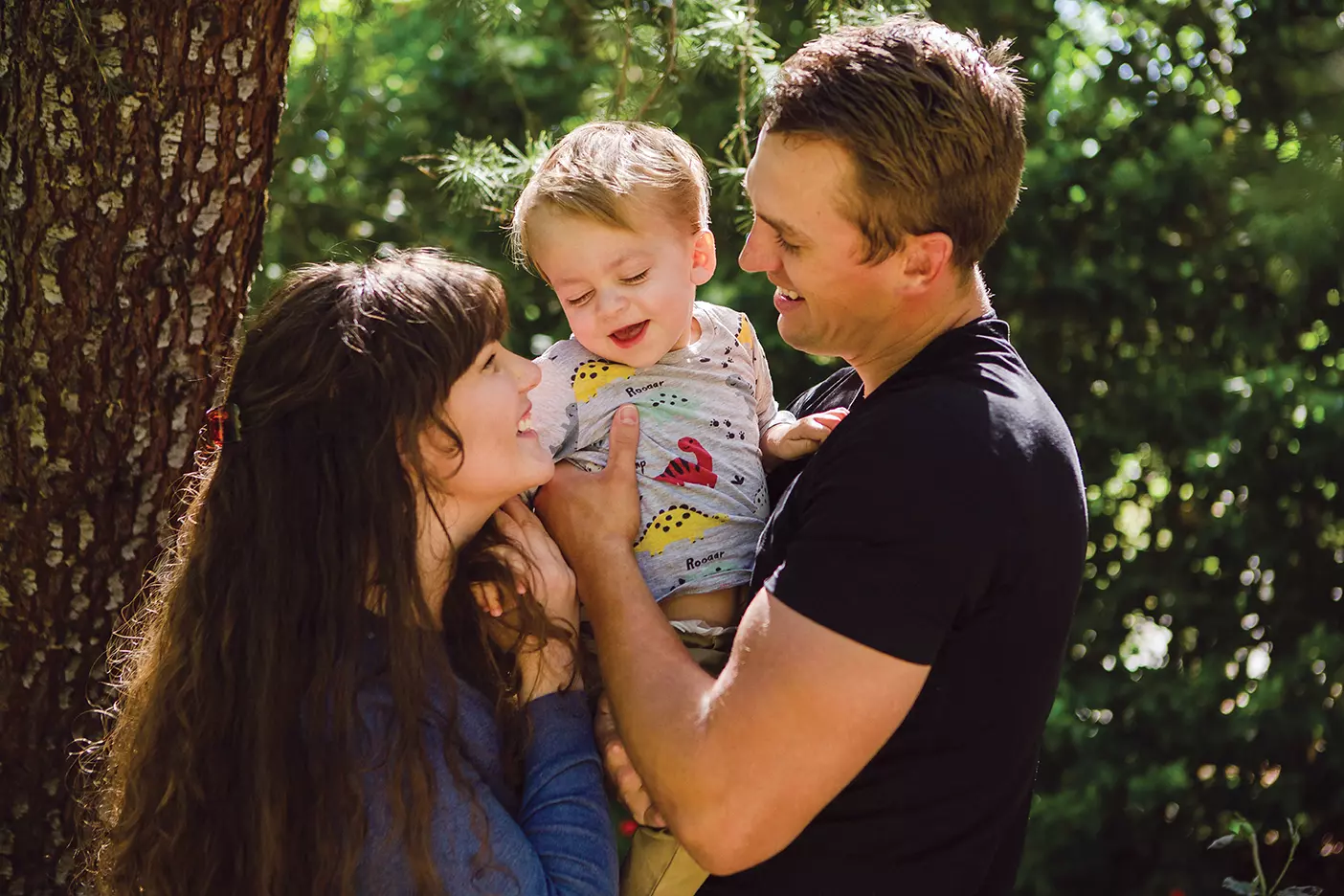
Love, Marriage, Baby
Back in their BYU days, Brittany and Brock had no inkling of the life challenges they would someday face. She was a senior studio-art major, playing the piano for her student ward choir. He was a football and rugby athlete, recently home from a mission to Brazil, who joined the ward choir, mostly because he was “interested in the pianist.”
They started dating a few months later. “On the first date he asked me to be his girlfriend,” she says. But graduation loomed and Brittany was off to California in just a few months. She needed to know quickly if it was going to work out. “So I worked to get to know him as fast as possible, grilling him with questions,” she says. “He answered all the questions correctly.”
They dated long-distance while she worked on a master’s at CalArts. Then they got married, took turns finishing their degrees, and settled in Santa Clarita. Brittany began to pursue her dream of working as a theme-park designer—right now she is helping develop the Harry Potter experience being built in Japan. Brock started his career as a stunt performer—he’s working now for Universal Studios as well as Disney California Adventure Park.
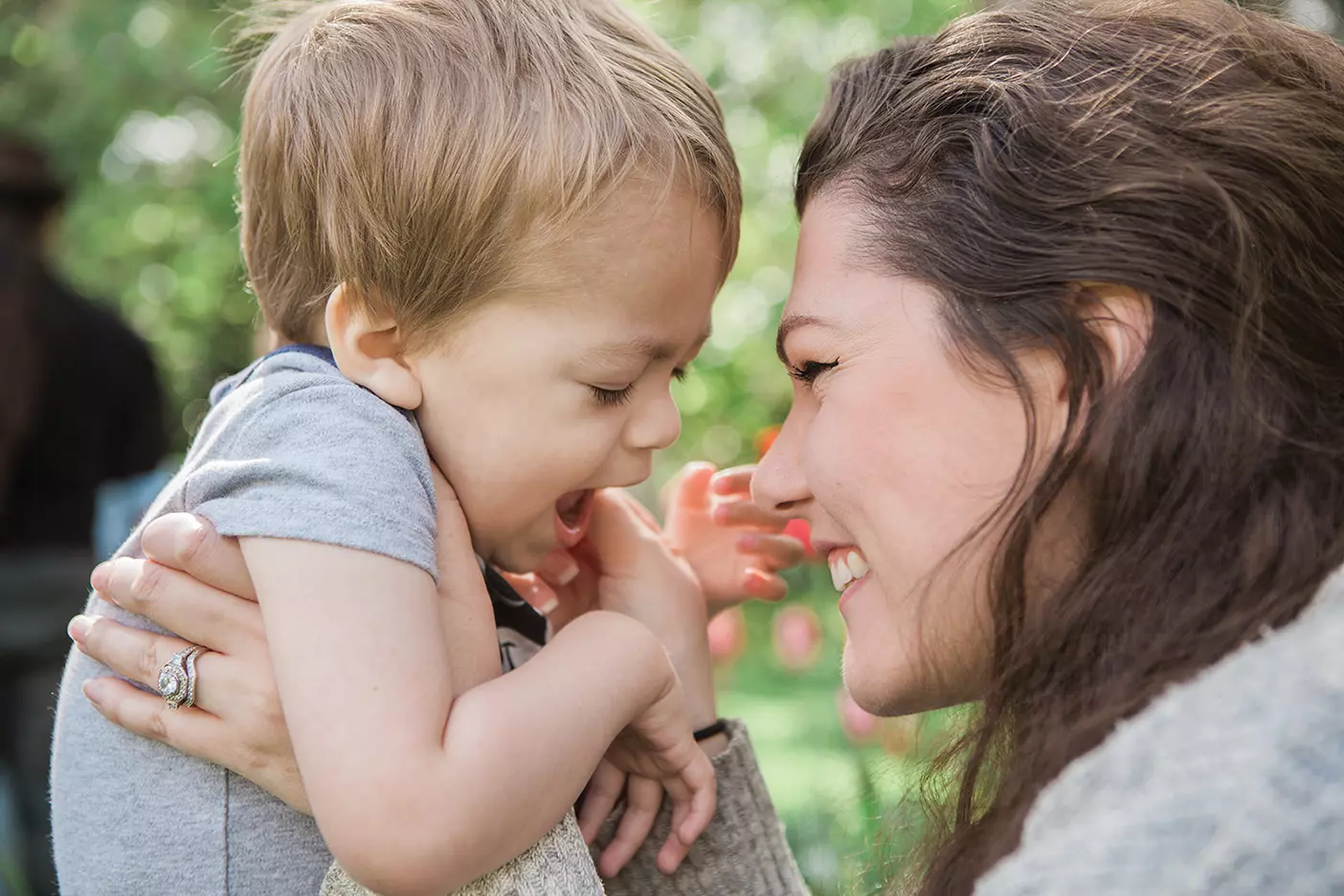
Love, marriage, then on May 24, 2019, a baby boy. “Damian Brock Markham is the most handsome, sweetest, smiley boy there ever was!” wrote Brittany in their family Christmas letter later that year. At 7 months old, she noted that her little sidekick was outgoing and social: “He’s always well-behaved in public and so quick to smile when people talk to him!”
Before her boy was born—long before she knew of the challenges ahead—Brittany had prayed for him to have another specific trait. As she later recounted in a blog post, she had implored: “Please, God, make him a fighter.”
A Sliver of Hope
For the first year and a half of Damian’s life, Brittany and Brock didn’t think anything was wrong. They worried that he was still spitting up a lot, but his doctors weren’t concerned, dismissing it as reflux. But then in early 2021 Damian’s normally happy, high-energy, energetic behavior—full of chatter and cute waves to all passersby—changed. He talked less and stopped wanting to sit or stand.
A routine blood test found that Damian’s liver enzymes were elevated. Later, an ultrasound revealed a dramatically enlarged liver and spleen. Finally, a doctor ordered a test for acid sphingomyelinase deficiency (ASMD), or Niemann-Pick disease.
The doctor told them to not worry too much yet, adding, “There are different types, and there are some people with the disease who live into adulthood.”
That’s when an alarm went off in Brittany’s mind: “What do you mean, ‘There are some people who live into adulthood?’”

The doctor advised Brittany not to look it up, so, naturally, as soon as she got home she learned everything she could online. She discovered there are three types of the disease, none of them good, but type A—caused by a missing enzyme that allows fats to build up in the spleen, liver, lungs, bone marrow, and brain—was definitely the worst. The build-up leads to progressive neurological damage, causing a mental decline that resembles Alzheimer’s disease. Most with type A die by age 2 or 3.
A genetics test, biopsy, then six weeks of waiting.
When the result came—type A—the Markhams were devastated.
And frustrated. Brittany kept asking about the next steps, how to treat the disease. While the doctors said that available therapies might help slow his regression, there was no cure.
A determined Brittany quickly got to work on her laptop. As she tapped into the network of doctors and parents familiar with the disease, she kept hearing the same thing: treatments were in the works, but they would likely not be ready for five years—too late for Damian.
But it was something. “The smallest sliver of hope lit up inside of me, and I knew I had to do something,” Brittany wrote on her blog. “It’s just bureaucracy and funding standing in the way between me and Damian’s future. That is something I can affect.”
We Are Doing This
“It’s really hard to get people to care about rare disease, but it’s really easy to get people to care about Damian,” says Brittany.
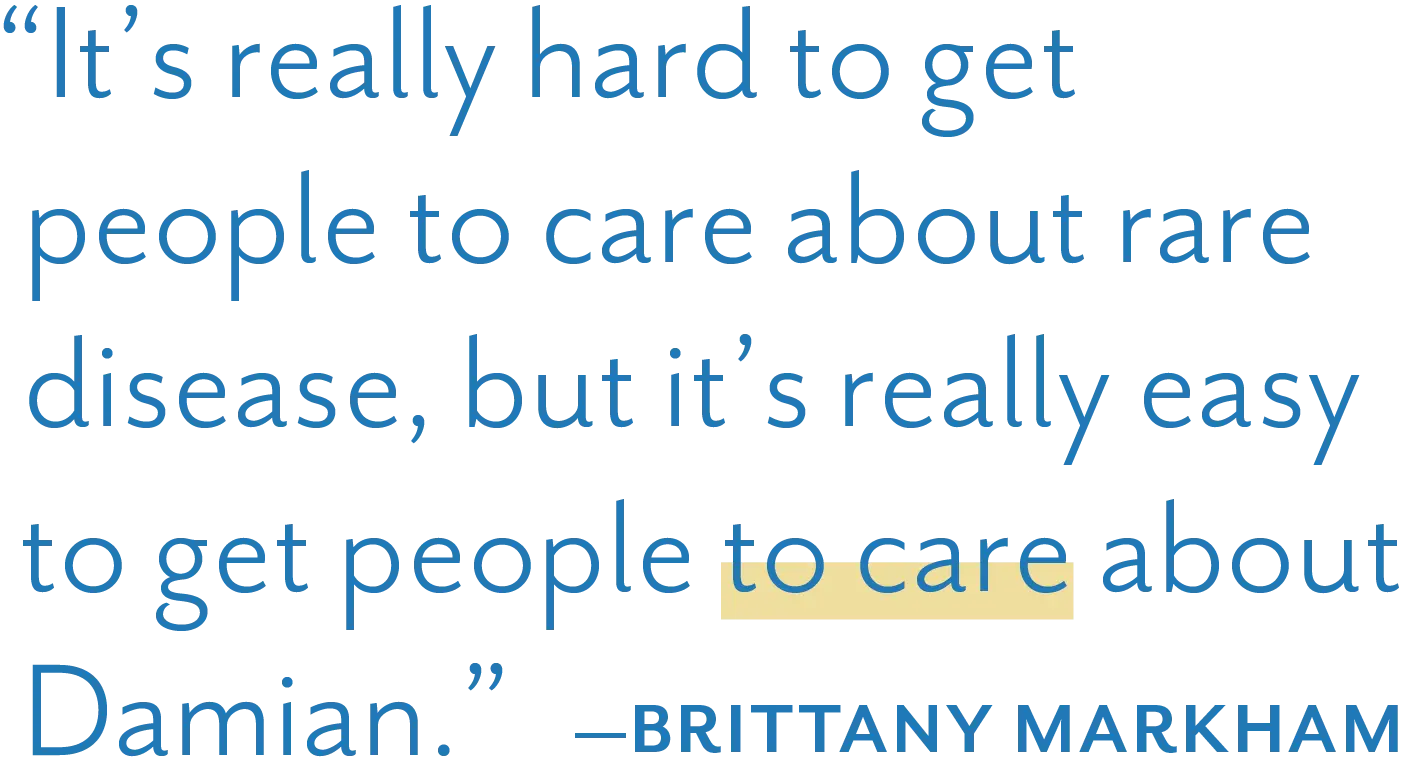
After learning of several promising treatments in development, Brittany engaged her project-manager mindset, rolled up her sleeves, and began raising funds and building awareness for the Wylder Nation advocacy group (a foundation fighting ASMD) while still working part-time and caring for Damian. And she had to figure out how to navigate bureaucracy and cut through the red tape of the medical and insurance industries.
It was a daunting endeavor, but she had a secret, adorable weapon—Damian. Sharing their story on a blog, YouTube, Instagram, and other social-media outlets, Brittany launched a campaign and raised $50,000 in just three days. Learning quickly from online influencers, she garnered a sizable following—11,000 on Instagram alone—and found ways to reach wider audiences. Brittany and Brock host a live “Storytime with Damian” each Sunday; Brittany sings for tips on YouTube; and the Markhams started a baby-food challenge to raise funds.
BYU celebrities soon joined in to spread the word to their massive followings. Quarterback Jaren T. Hall (’22) and other BYU athletes helped with a fundraiser in Provo. Jimmer T. Fredette (BA ’16) tweeted about Damian, asking for support from Cougar Nation, and radio host Benjamin J. Criddle (BA ’08) interviewed the Markhams. Local media outlets picked up Damian’s story, and the family was even featured on The Dr. Oz Show.
But the biggest boost came on June 10, 2021, when Brittany and Brock woke up at 6 a.m. to her phone blowing up with Venmo alerts. Instagram influencer and government teacher Sharon McMahon (@SharonSaysSo) had created a daylong Instagram fundraiser for her followers, “the Governerds,” raising $400,000 in a day, bringing the total raised to $500,000.
The Markhams shared their emotional response via an Instagram video, Brock noting: “We’ve had a lot of $2–$3 donations with messages saying, ‘It’s not much.’”
Brittany responds, “Well, we’ve got tens of thousands of people saying that. . . . It’s a lot!” Seeing his mom cry, Damian waves in an attempt to cheer her up.
Along with the donations, the Markhams received hundreds of stories of lemonade stands, collection jars, signs, fundraisers, and social-media shares, along with prayers, tears, and words of kindness. In a time when the world feels divided and angry, the Markhams say they have daily reminders that people are good. One woman in Alabama whose child attends a religious preschool reached out to say: “Just so you know, you’ve got a lot of sweet spirits that are praying for you.”


“We don’t know anybody from Alabama. How do these preschoolers know about Damian? And how sweet is it that they want to pray for him every day?” Brittany says. “Stories like that and knowing how good humanity is, I think, is really a light for people, and I think that’s one of the main reasons why people are invested in us.”
As she pushes for the more than $2 million still needed, Brittany takes her smiling toddler everywhere she goes. Her car is plastered with “Please Save Damian” magnets showing his picture and a QR code to their GoFundMe campaign. She wears a T-shirt with the same message and link when taking Damian to as many big gatherings and Santa Clarita city events as they can. “I am humbled to report that every time we do that, we are noticed,” Brittany noted on her blog. “People really do want to help.”
Working for a Cure
Before his diagnosis, Damian hit all of the toddler milestones of smiling, speaking, feeding himself, throwing toys, and, especially, waving. But as the effects of ASMD set in, the Markhams started mourning milestones in reverse as Damian unlearned skills and words one by one, almost in the exact opposite order that he learned them. “It’s truly like we’re reliving his first year of life in reverse,” notes Brittany.
Damian’s last word was Daddy. “I remember . . . when I first realized my baby wouldn’t ever say my name before he lost the ability to say words,” Brittany wrote on Instagram. “That was hard.”
The initial $500,000 funded what Brittany calls “Brain 1.0”—an experimental treatment geared toward slowing or stopping this decline via a small-molecule drug that passes through the blood-brain barrier. In April Damian began the experimental treatment—via a powder mixed in his yogurt—after a months-long battle by the Markhams and Damian’s medical team to overturn the FDA’s original “full clinical hold.”
Brittany’s “mama bear” instincts have been crucial in staying on top of Damian’s treatment. Hospital and drug company execs, as well as people at the FDA, know her name as she has reached out to them directly, often by guessing their email addresses, to keep Damian’s case moving forward. She’s had to deal with human-error mistakes and cumbersome processes that have delayed Damian’s treatments. Brittany is “the one who has been moving everything forward,” says Brock. “She is working much more than full-time and doing it wonderfully.”
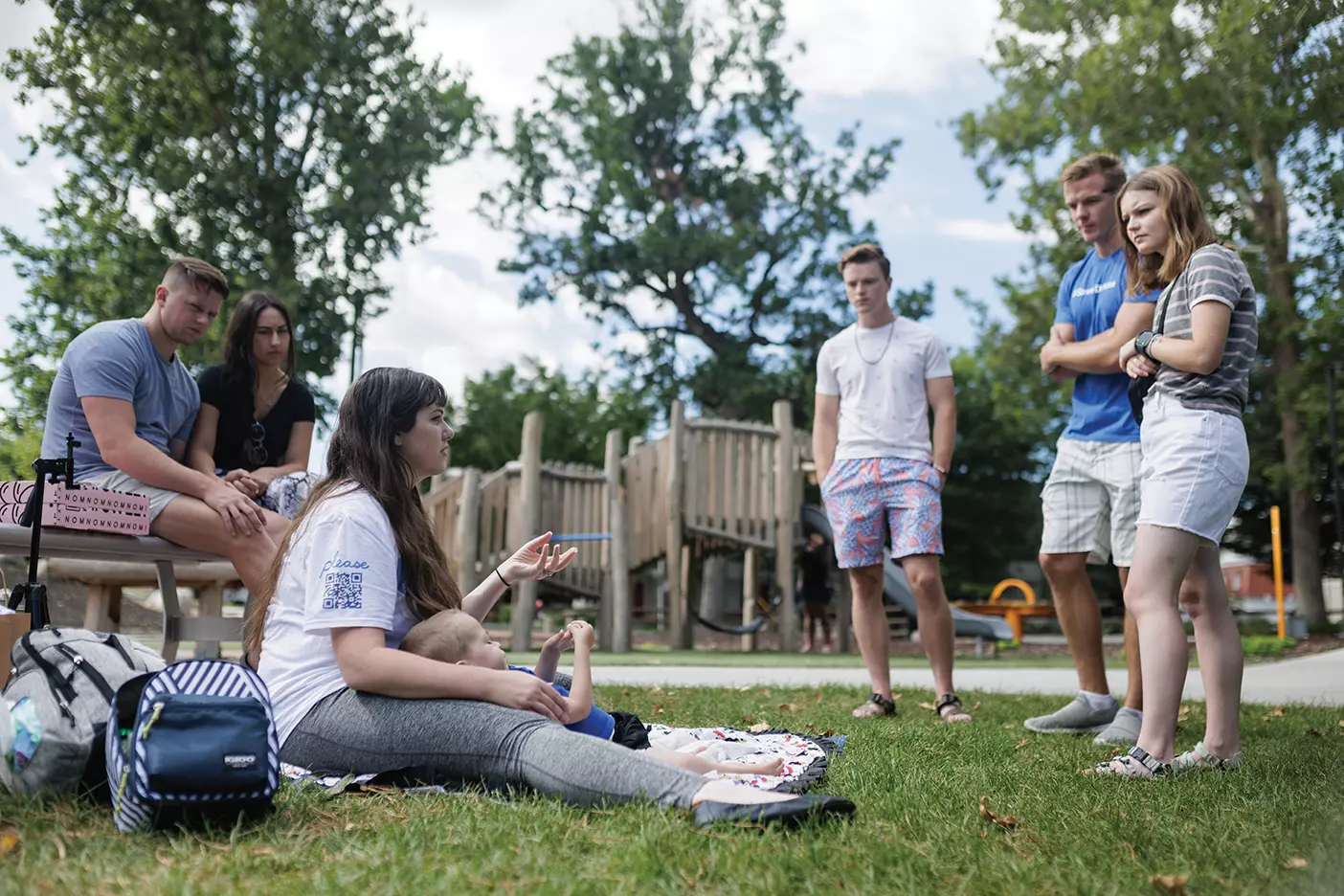
In the months since Damian received his first treatment of Brain 1.0, he seems to have regained some mental clarity and muscle tone—signs that the neurodegeneration may have paused. This borrowed time allows Damian to benefit from enzyme replacement therapy (ERT) to shrink his spleen and liver, which will make digestion and breathing easier. And it gives the Markhams time to raise funds for an additional treatment—Brain 2.0.
Brain 2.0 is a developing treatment that, in lab testing, is showing the potential to be more effective than the small-molecule drug Damian is taking now. The hope is that it will extend his life and allow him to regain lost skills and words—even learn his mother’s name. But more than $2 million in funding is needed to expedite the research, testing, approvals, and production in time for Damian to benefit.
Hope for a Happy Ending
The Markhams can’t be sure if their efforts will be enough to save Damian. But every time they meet an obstacle, they persevere, prayerfully repeating the idea, “We didn’t come this far just to get this far.” Brittany believes that Heavenly Father wants ASMD to be overcome. “We have the capacity to do it as scientists, as researchers, as human beings,” she says. “We just need it to get done.”
Their efforts aren’t just for Damian. They’re blazing a treatment trail for all children with ASMD and a path of hope for parents facing the same dreadful diagnosis.
In a Mother’s Day blog post, Brock shares that “many days are difficult, seemingly dark and hopeless.” Even so, he notes, “Brittany pushes on. If you were to ask her, however, I don’t think there ever was a second choice; the only option was to fight and do everything possible for Damian.”
Brock believes Damian is also grateful. “Just seeing the way Damian looks up at his mother makes it obvious he has some small understanding of what she is doing for him, and he loves her for it; we both do.”
On her blog Brittany surmises that maybe their mission on earth is to spread awareness and propel forward the treatment of this disease. “God knows I will do whatever it takes to extend my boy’s life. I believe Damian’s mission in life goes beyond bringing love and joy to our home (though he has certainly done that a million times over). I think Damian and I have a work to do together, and I think it’s defeating this ruthless disease. We are both fighters now.”
Web: Follow the Markhams’ journey at www.SaveDamian.com.
Feedback Send comments on this article to magazine@byu.edu.


